 Search by Keyword
|
"BACK IN THE U.S.S.R."
(John Lennon - Paul McCartney)
John Lennon: "What we're trying to do is rock 'n roll, 'with less of your philosorock,' is what we're saying to ourselves. And to get on with rocking because rockers is what we really are...Everybody says we must do this and that but our thing is just rocking...That's what this new record is about. Definitely rocking." Paul McCartney: "It's a return to a more rock 'n roll sound. We felt it was time to step back because that's what we wanted to do.
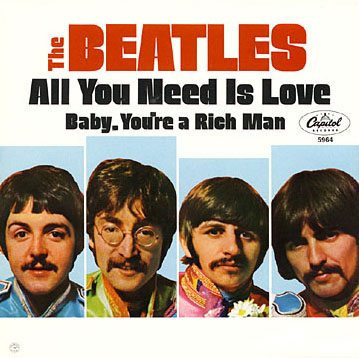 These two quotes, both from 1968, reveal The Beatles' intentions regarding the recording of their first Apple album “The Beatles,” popularly known as “The White Album.” With all of their groundbreaking releases of 1967, most noteworthy being their “Sgt. Pepper” album and the anthemic “All You Need Is Love,” the one thing they temporarily put off to the side during that year was straight ahead, heart pounding, rock and roll. These two quotes, both from 1968, reveal The Beatles' intentions regarding the recording of their first Apple album “The Beatles,” popularly known as “The White Album.” With all of their groundbreaking releases of 1967, most noteworthy being their “Sgt. Pepper” album and the anthemic “All You Need Is Love,” the one thing they temporarily put off to the side during that year was straight ahead, heart pounding, rock and roll.
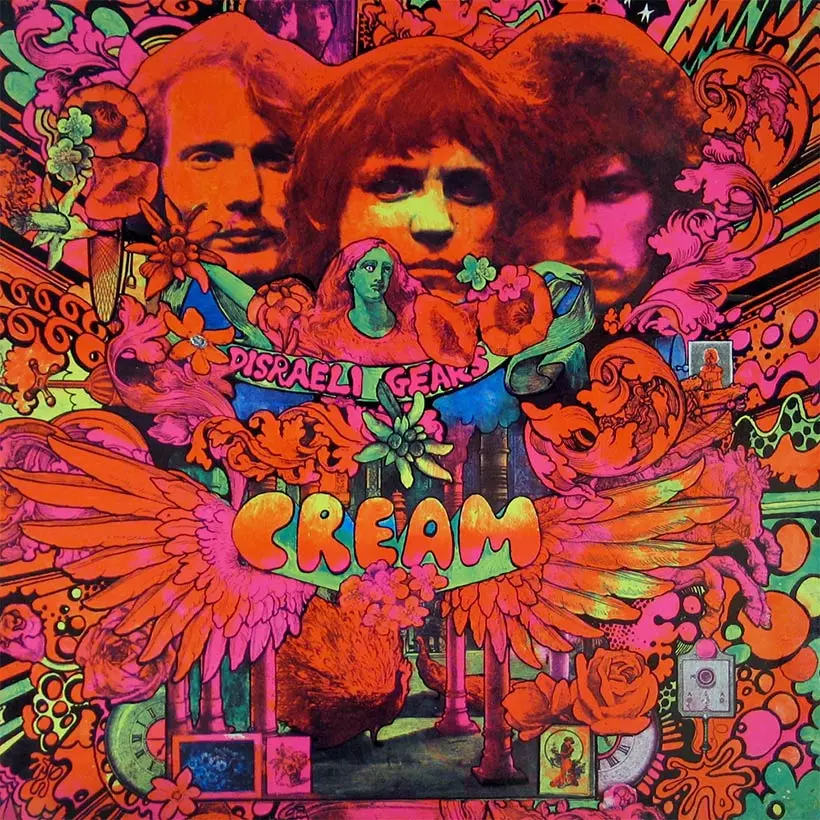 The Beatles became the purveyors of studio experimentation in 1967 and, knowingly or unknowingly, the leading proponents of the “summer of love” movement. (Evidence of this was the crowd of “hippies” following George Harrison during his brief visit to the Haight-Ashbury district of San Francisco and referring to George as their “leader.”) However, a burgeoning undercurrent of “hard rock” was emerging at the same time, with Cream and The Jimi Hendrix Experience forging this new ground. The Beatles were great admirers of this new sound and, knowing they could rock like the best of them, decided to focus their attentions in this direction. It was by no mistake that the lead-off track of their 1968 album, therefore, was a rocker – one that is still a mainstay on classic rock stations to this day. Enter, “Back In The U.S.S.R.” The Beatles became the purveyors of studio experimentation in 1967 and, knowingly or unknowingly, the leading proponents of the “summer of love” movement. (Evidence of this was the crowd of “hippies” following George Harrison during his brief visit to the Haight-Ashbury district of San Francisco and referring to George as their “leader.”) However, a burgeoning undercurrent of “hard rock” was emerging at the same time, with Cream and The Jimi Hendrix Experience forging this new ground. The Beatles were great admirers of this new sound and, knowing they could rock like the best of them, decided to focus their attentions in this direction. It was by no mistake that the lead-off track of their 1968 album, therefore, was a rocker – one that is still a mainstay on classic rock stations to this day. Enter, “Back In The U.S.S.R.”
Songwriting History
The song was written during the band's visit to Rishikesh, India is early 1968, the intention being to study and practice Transcendental Meditation with the view to becoming teachers of this art (or so the Maharishi desired). This supposed three-month retreat ended early for all four of The Beatles for different reasons, Paul arriving in India on February 19th and then leaving five weeks later, on March 26th. He didn't become an instructor in meditation upon his arrival home, nor did he even speak about the practice much, but this escape from the rigors of fame did result in him writing a wealth of songs for the next Beatles album, his book “Many Years From Now” claiming fifteen songs being written by him during these five weeks.
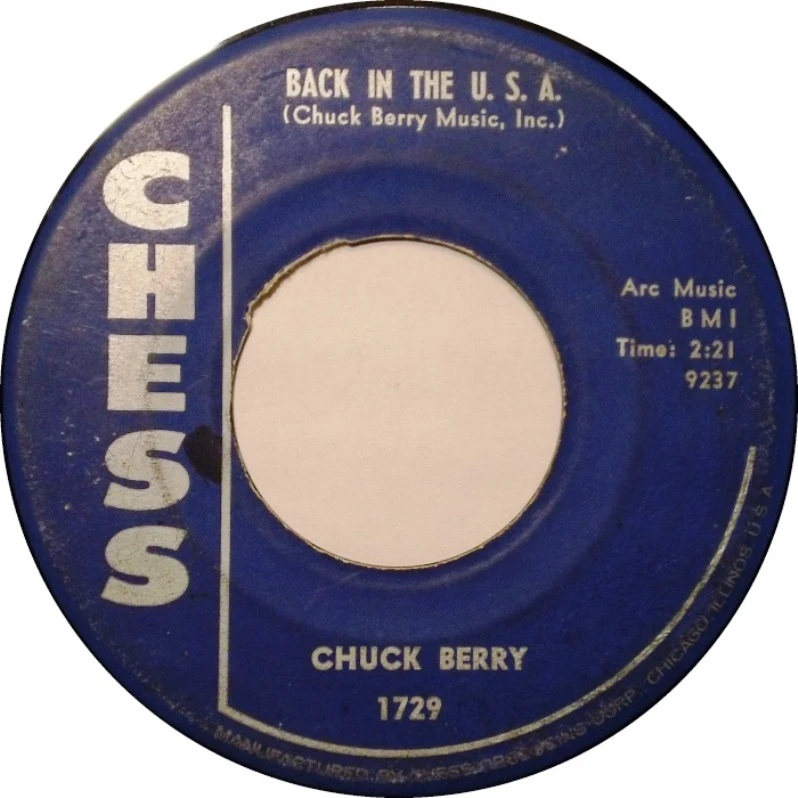 The first germ of an idea for this song, according to Ian MacDonald's book “Revolution In The Head,” came from “1968's pro-British industry campaign 'I'm Backing Britain.' This McCartney rocker was originally called 'I'm Backing The U.K.' before turning surrealistically into 'I'm Backing The U.S.S.R.'” Paul then drove this idea in a somewhat interesting and comical direction. “This just, sort of, came,” Paul said in 1968. “Chuck Berry once did a song called 'Back In The U.S.A,' which is very American, very Chuck Berry, you know. He was 'serving in the army and, when I get back home, I'm gonna kiss the ground,' you know, 'can't wait to get back to the States.' It's very much an American thing, I always thought. So, this one, 'Back In The U.S.S.R.' was about, in my mind, a spy who has been in America for a long, long time. Some fellow who's been in America for a long time and he's picked up and he's very American, but he gets back to the USSR, and he's, sort of, saying 'Leave it till tomorrow, honey to disconnect the phone,' and 'come here, honey,' with Russian women, and all that.” The first germ of an idea for this song, according to Ian MacDonald's book “Revolution In The Head,” came from “1968's pro-British industry campaign 'I'm Backing Britain.' This McCartney rocker was originally called 'I'm Backing The U.K.' before turning surrealistically into 'I'm Backing The U.S.S.R.'” Paul then drove this idea in a somewhat interesting and comical direction. “This just, sort of, came,” Paul said in 1968. “Chuck Berry once did a song called 'Back In The U.S.A,' which is very American, very Chuck Berry, you know. He was 'serving in the army and, when I get back home, I'm gonna kiss the ground,' you know, 'can't wait to get back to the States.' It's very much an American thing, I always thought. So, this one, 'Back In The U.S.S.R.' was about, in my mind, a spy who has been in America for a long, long time. Some fellow who's been in America for a long time and he's picked up and he's very American, but he gets back to the USSR, and he's, sort of, saying 'Leave it till tomorrow, honey to disconnect the phone,' and 'come here, honey,' with Russian women, and all that.”
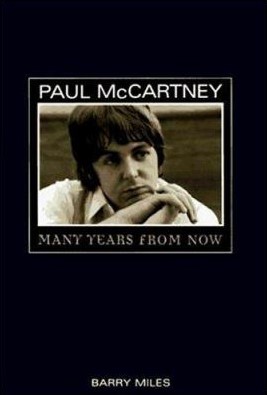 Paul elaborated further in “Many Years From Now”: "'Back In The U.S.S.R.' was my take-off of Chuck Berry's 'Back In The U.S.A.' It's a typical American thing to say when they're away: 'I miss my doughnuts and my Howard Johnson's and my launderettes and I miss the convenience of the Hyatt Hilton and it's just so much better back home and the TV's got more channels...' So I thought, 'Great, I'll do a spoof on that. This'll be someone who hasn't got a lot but they'll still be every bit as proud as an American would be.' It's tongue in cheek. This is a traveling Russkie who has just flown in from Miami Beach; he's come the other way.” Paul elaborated further in “Many Years From Now”: "'Back In The U.S.S.R.' was my take-off of Chuck Berry's 'Back In The U.S.A.' It's a typical American thing to say when they're away: 'I miss my doughnuts and my Howard Johnson's and my launderettes and I miss the convenience of the Hyatt Hilton and it's just so much better back home and the TV's got more channels...' So I thought, 'Great, I'll do a spoof on that. This'll be someone who hasn't got a lot but they'll still be every bit as proud as an American would be.' It's tongue in cheek. This is a traveling Russkie who has just flown in from Miami Beach; he's come the other way.”
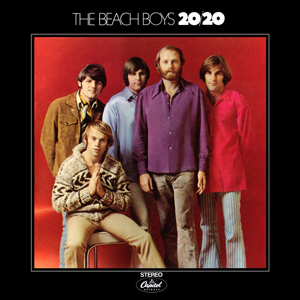 Another visitor at the camp in India at the time was Beach Boys member Mike Love who remembers the formation of the song, even contributing a suggestion for its writing. “I was sitting at the breakfast table and McCartney came down with his acoustic guitar and he was playing 'Back In The U.S.S.R.' and I told him that what you ought to do is talk about the girls all around Russia, The Ukraine and Georgia. He was plenty creative not to need any lyrical help from me but I gave him the idea for that little section” This suggestion was intended to add a Beach Boys-like spin to the lyrics, as if a Russian man was singing their hit “California Girls.” Paul then wrote the recurring bridge to the song in that vein, admiring the girls from the Ukraine, Moscow and Georgia. “I think it was lighthearted and humorous of them to do a take on The Beach Boys,” Mike Love adds. Another visitor at the camp in India at the time was Beach Boys member Mike Love who remembers the formation of the song, even contributing a suggestion for its writing. “I was sitting at the breakfast table and McCartney came down with his acoustic guitar and he was playing 'Back In The U.S.S.R.' and I told him that what you ought to do is talk about the girls all around Russia, The Ukraine and Georgia. He was plenty creative not to need any lyrical help from me but I gave him the idea for that little section” This suggestion was intended to add a Beach Boys-like spin to the lyrics, as if a Russian man was singing their hit “California Girls.” Paul then wrote the recurring bridge to the song in that vein, admiring the girls from the Ukraine, Moscow and Georgia. “I think it was lighthearted and humorous of them to do a take on The Beach Boys,” Mike Love adds.
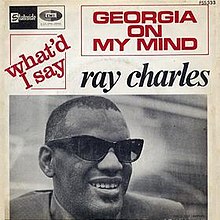 "I just liked the idea of Georgia girls," Paul recalls, "and talking about places like the Ukraine as if they were California, you know? It was also hands-across-the-water, which I'm still conscious of. 'Cuz they like us out there, even though the bosses in the Kremlin may not. The kids do...He can't wait to get back to the Georgian mountains: 'Georgia's always on my mind'; there's all sorts of little jokes in it. It's a jokey song, but it's also become a bit of an anthem now." Paul elaborates further in his 2021 book "The Lyrics," saying: "Then we've got the humorous reference to 'Georgia On My Mind,' as sung by Ray Charles, but referring to Georgia in the Soviet Union rather than the US state. That this character somehow prefers the USSR to the USA is what makes this song funny. And once we start running through the USSR territories, we could go on for hours. It's almost as if the song is writing itself at this stage." "I just liked the idea of Georgia girls," Paul recalls, "and talking about places like the Ukraine as if they were California, you know? It was also hands-across-the-water, which I'm still conscious of. 'Cuz they like us out there, even though the bosses in the Kremlin may not. The kids do...He can't wait to get back to the Georgian mountains: 'Georgia's always on my mind'; there's all sorts of little jokes in it. It's a jokey song, but it's also become a bit of an anthem now." Paul elaborates further in his 2021 book "The Lyrics," saying: "Then we've got the humorous reference to 'Georgia On My Mind,' as sung by Ray Charles, but referring to Georgia in the Soviet Union rather than the US state. That this character somehow prefers the USSR to the USA is what makes this song funny. And once we start running through the USSR territories, we could go on for hours. It's almost as if the song is writing itself at this stage."
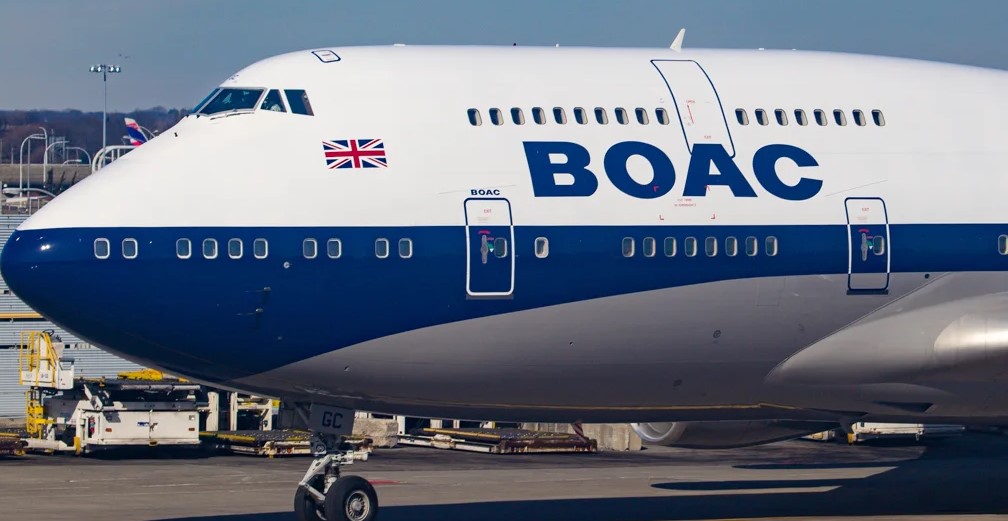 Other humorous details found in the lyrics include the depiction of the “dreadful flight” with "BOAC" (now called British Airways) from Miami Beach, the location where The Beatles performed their second appearance on The Ed Sullivan Show in February of 1964. The singer of "Back In The U.S.S.R." relates that a “paper bag” was on his knee, probably the only known reference to a 'barf bag' in popular music. Other humorous details found in the lyrics include the depiction of the “dreadful flight” with "BOAC" (now called British Airways) from Miami Beach, the location where The Beatles performed their second appearance on The Ed Sullivan Show in February of 1964. The singer of "Back In The U.S.S.R." relates that a “paper bag” was on his knee, probably the only known reference to a 'barf bag' in popular music.
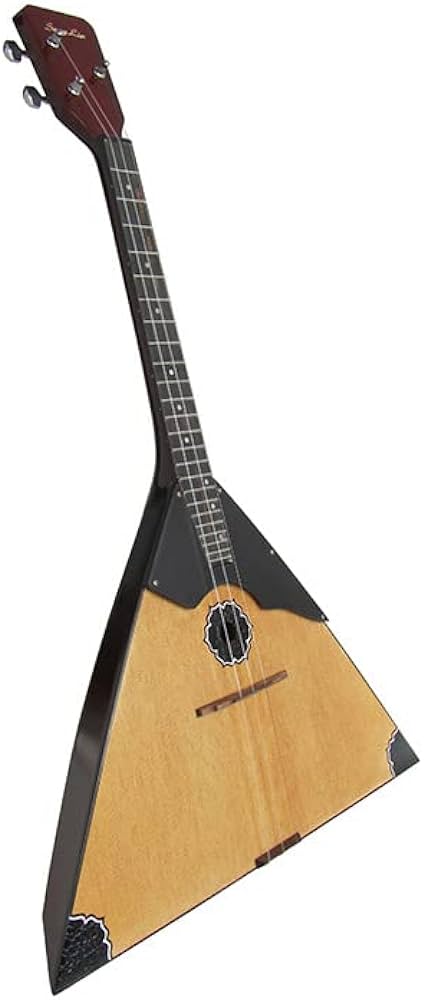 "At a couple of points," as Paul points out in "The Lyrics," "the idea that a Russian guy is saying you don't know how lucky you are to live in the U.S.S.R. is a bit undercut. I'm thinking of the reference to disconnecting the phone. Phone tapping was probably part of the back-of-the-mind view of the USSR The reference to 'your daddy's farm' is a bit complex too, when you consider that collectivisation had been the order of the day in the USSR. So 'daddy' might be Stalin or Brezhnev, who was in power at the time." Instead of wanting to experience skyscrapers, hamburgers and drive-ins (as in “Back In The U.S.A.”), the singer longs for other southern desires. Paul continues: "The line 'show me round your snow-peaked mountains way down south' has a bit of a naughty schoolboy tinge, not to mention 'Come and keep your comrade warm.'" As for “balalaikas ringing out,” this was referring to authentic Russian triangular three-stringed instruments. "At a couple of points," as Paul points out in "The Lyrics," "the idea that a Russian guy is saying you don't know how lucky you are to live in the U.S.S.R. is a bit undercut. I'm thinking of the reference to disconnecting the phone. Phone tapping was probably part of the back-of-the-mind view of the USSR The reference to 'your daddy's farm' is a bit complex too, when you consider that collectivisation had been the order of the day in the USSR. So 'daddy' might be Stalin or Brezhnev, who was in power at the time." Instead of wanting to experience skyscrapers, hamburgers and drive-ins (as in “Back In The U.S.A.”), the singer longs for other southern desires. Paul continues: "The line 'show me round your snow-peaked mountains way down south' has a bit of a naughty schoolboy tinge, not to mention 'Come and keep your comrade warm.'" As for “balalaikas ringing out,” this was referring to authentic Russian triangular three-stringed instruments.
Mike Love may have contributed an idea for this song, but did John have any part in writing this “Lennon / McCartney” composition? “Paul completely,” John stated when asked in 1980.
Recording History
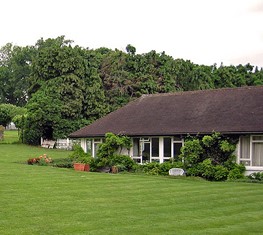 The first time “Back In The U.S.S.R.” was committed to tape was on either May 28th or 29th, 1968, this being in demo form on an Ampex four-track machine at George Harrison's 'Kinfauns' house in Esher, Surrey. The Beatles met there on these two days to demo and/or introduce the songs they had written in India to each other, planning on then going into EMI Studios the following day (May 30th) to start recording their next album, which would affectionately come to be known as “The White Album.” The first time “Back In The U.S.S.R.” was committed to tape was on either May 28th or 29th, 1968, this being in demo form on an Ampex four-track machine at George Harrison's 'Kinfauns' house in Esher, Surrey. The Beatles met there on these two days to demo and/or introduce the songs they had written in India to each other, planning on then going into EMI Studios the following day (May 30th) to start recording their next album, which would affectionately come to be known as “The White Album.”
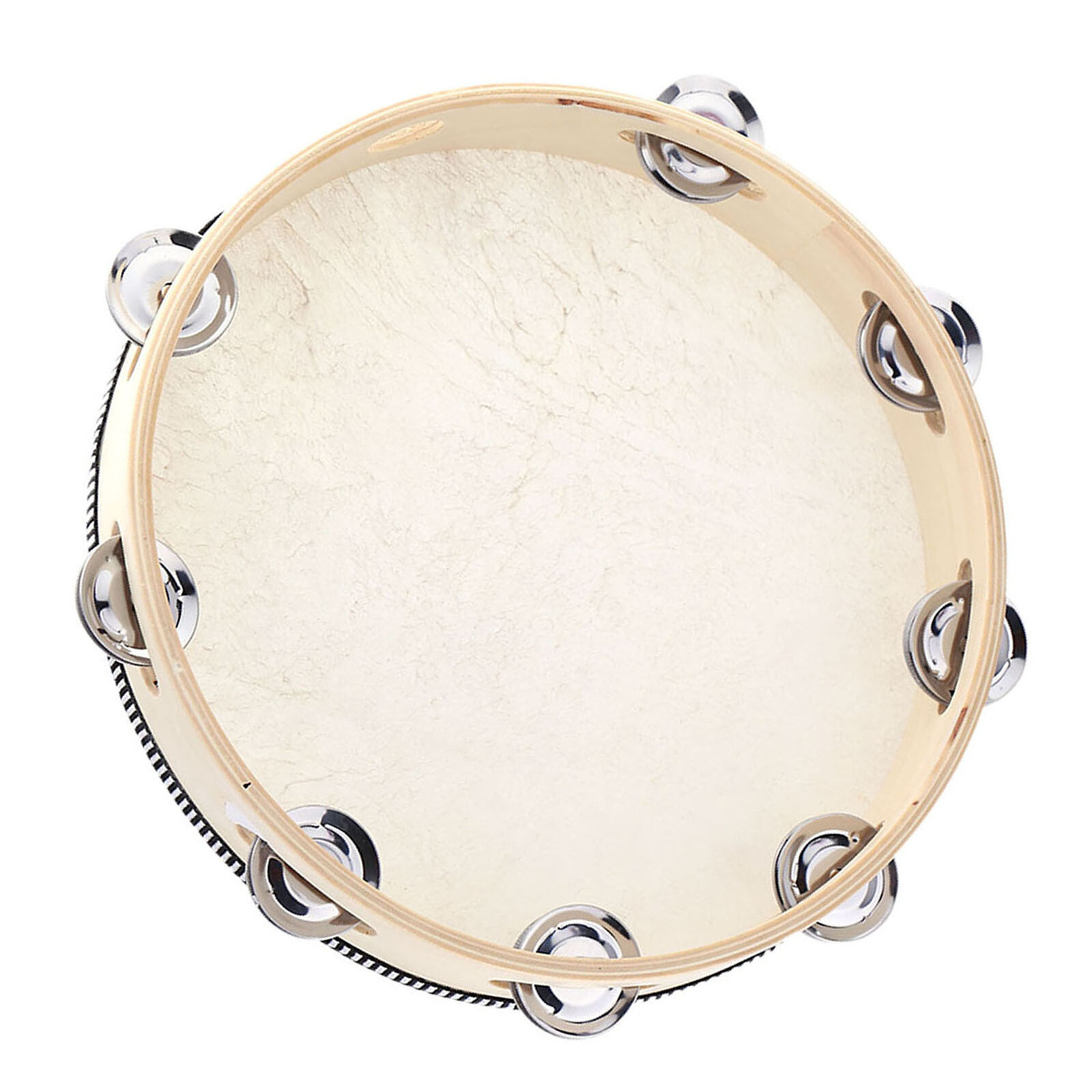 The demo is interesting in that it consists mostly of Paul on acoustic guitar and double-tracked lead vocals, at least one other acoustic guitar being heard as well as backing vocals, handclaps and a tambourine. While no one can say for sure who contributed these other elements, Paul definitely played the biggest role, undoubtedly layering most (if not all) of these himself. In place of where the guitar solo eventually would appear, Paul repeats the first verse, the flight being described as “awful” instead of “dreadful” as in the finished version. Also, the third verse as we've come to know it (“Show me around your snow-peaked mountains...”) did not appear on this demo, this verse probably not in existence as of yet. In place of this, Paul repeats the second verse and then follows that up with another verse, mouthing what a guitar solo would be as the song fades away. This demo is in a lower key and is substantially slower, thereby lacking the excitement of what we hear as the finished product, yet it did express the flavor of what Paul intended. The demo is interesting in that it consists mostly of Paul on acoustic guitar and double-tracked lead vocals, at least one other acoustic guitar being heard as well as backing vocals, handclaps and a tambourine. While no one can say for sure who contributed these other elements, Paul definitely played the biggest role, undoubtedly layering most (if not all) of these himself. In place of where the guitar solo eventually would appear, Paul repeats the first verse, the flight being described as “awful” instead of “dreadful” as in the finished version. Also, the third verse as we've come to know it (“Show me around your snow-peaked mountains...”) did not appear on this demo, this verse probably not in existence as of yet. In place of this, Paul repeats the second verse and then follows that up with another verse, mouthing what a guitar solo would be as the song fades away. This demo is in a lower key and is substantially slower, thereby lacking the excitement of what we hear as the finished product, yet it did express the flavor of what Paul intended.
 The group didn't get around to begin officially recording the song until nearly three months later, August 22nd, 1968, in EMI Studio Two. The session was scheduled to begin at 7 pm but, as was usual during the sessions for this album, they probably arrived much later than that. One of The Beatles, however, was more punctual than the rest. Engineer Ron Richards explains: “Ringo was always sitting in the reception area waiting, just sitting there or reading a newspaper. He used to sit there for hours waiting for the others to turn up.” Engineer Peter Vince relates how other tensions were apparent during these days as well: “Things were getting very strained on Beatles sessions by this time. The engineers would be asked to leave. They'd say, 'Go off for a meal' or 'Go off for a drink' and you'd know they were having heavy discussions and didn't want anyone around.” The group didn't get around to begin officially recording the song until nearly three months later, August 22nd, 1968, in EMI Studio Two. The session was scheduled to begin at 7 pm but, as was usual during the sessions for this album, they probably arrived much later than that. One of The Beatles, however, was more punctual than the rest. Engineer Ron Richards explains: “Ringo was always sitting in the reception area waiting, just sitting there or reading a newspaper. He used to sit there for hours waiting for the others to turn up.” Engineer Peter Vince relates how other tensions were apparent during these days as well: “Things were getting very strained on Beatles sessions by this time. The engineers would be asked to leave. They'd say, 'Go off for a meal' or 'Go off for a drink' and you'd know they were having heavy discussions and didn't want anyone around.”
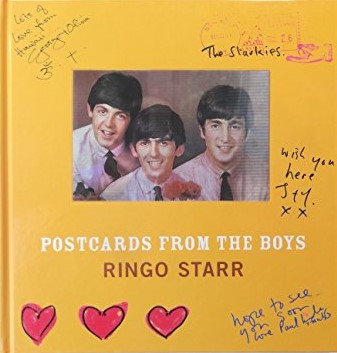 Some heavy discussions ensued during their rehearsal for “Back In The U.S.S.R.” on this day. Paul, in a 1986 interview, gives us a good idea of how things went down with an already uptight Ringo on this day. “I'm sure it pissed Ringo off when he couldn't quite get the drums to 'Back In The U.S.S.R.' and I sat in. It's very weird to know that you can do a thing someone else is having trouble with. If you go down and do it, just bluff right through it, you think, 'What the hell, at least I'm helping.' Then the paranoia comes in – 'But I'm going to show him up!' I was very sensitive to that." In his book "Postcards From The Boys," Ringo relates: "Every time I went for a cup of tea he was on the drums!” Some heavy discussions ensued during their rehearsal for “Back In The U.S.S.R.” on this day. Paul, in a 1986 interview, gives us a good idea of how things went down with an already uptight Ringo on this day. “I'm sure it pissed Ringo off when he couldn't quite get the drums to 'Back In The U.S.S.R.' and I sat in. It's very weird to know that you can do a thing someone else is having trouble with. If you go down and do it, just bluff right through it, you think, 'What the hell, at least I'm helping.' Then the paranoia comes in – 'But I'm going to show him up!' I was very sensitive to that." In his book "Postcards From The Boys," Ringo relates: "Every time I went for a cup of tea he was on the drums!”
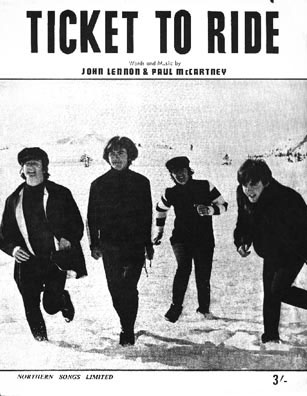 It appears that Paul had a particular drum pattern in mind and was attempting to explain it to Ringo (as he had done at various times during their career – see “Ticket To Ride” for example). Barry Miles, in Paul's biography "Many Years From Now," explains it as Paul ticking off Ringo "over a fluffled tom-tom fill." Possibly while Paul got behind the drum kit and was in the process of demonstrating to Ringo what he wanted, Ringo actually decided to quit the band. "Paul is the greatest bass guitarist in the world," Ringo explained in 1968, "but he is also very determined. He goes on and on to see if he can get his own way." Ken Scott, who was the engineer on this session, recalls: “I remember Ringo being uptight about something, I don't remember what, and the next thing I was told was that he'd quit the band.” “I felt two things,” Ringo explains in the Beatles Anthology special. “I felt I wasn't playing great, and the other three were really happy and I was an outsider. And so, you know, I came to this decision, ''F*ck it, I'm leaving.'" The drummer decided to take a well-deserved vacation to Sardinia on Peter Seller's yacht. It appears that Paul had a particular drum pattern in mind and was attempting to explain it to Ringo (as he had done at various times during their career – see “Ticket To Ride” for example). Barry Miles, in Paul's biography "Many Years From Now," explains it as Paul ticking off Ringo "over a fluffled tom-tom fill." Possibly while Paul got behind the drum kit and was in the process of demonstrating to Ringo what he wanted, Ringo actually decided to quit the band. "Paul is the greatest bass guitarist in the world," Ringo explained in 1968, "but he is also very determined. He goes on and on to see if he can get his own way." Ken Scott, who was the engineer on this session, recalls: “I remember Ringo being uptight about something, I don't remember what, and the next thing I was told was that he'd quit the band.” “I felt two things,” Ringo explains in the Beatles Anthology special. “I felt I wasn't playing great, and the other three were really happy and I was an outsider. And so, you know, I came to this decision, ''F*ck it, I'm leaving.'" The drummer decided to take a well-deserved vacation to Sardinia on Peter Seller's yacht.
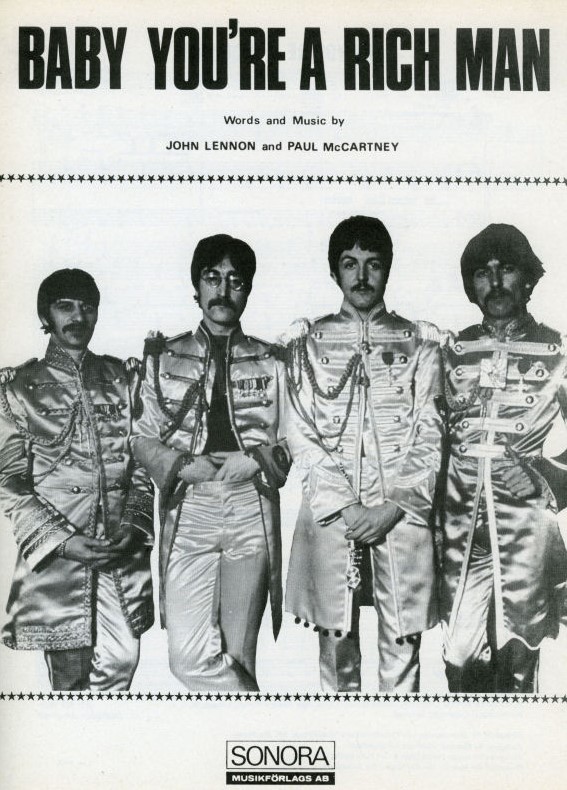 With The Beatles now drummer-less (Ringo being persuaded back into the group two weeks later), they still took advantage of the studio time on this day to record the basic backing track to “Back In The U.S.S.R.” Engineer Ken Scott, as quoted in the "'White Album' 50th Anniversary" book, relates that the drummer's absence was "not spoken about too much...and the whole thing was treated just as a 'Ringo's not here today' kind of thing, so we just carried on as usual." Since Paul knew what he wanted the drums to sound like, he played them himself with George playing a chopping pattern on electric guitar to accentuate the snare beats of the drums. “I played the six-string bass on that,” John recalled in 1980 about this rhythm track, the above mentioned "White Album" book stipulating that he played it "strumming chords rather than picking individual notes." Five attempts were made of this rhythm track, "take five" being deemed the best. They left the song in this state for the night to “leave it till tomorrow” for overdubs. After a tape copy of “Baby You're A Rich Man” was made for George Martin, possibly needed for editing the "Yellow Submarine" movie in preperation for its American release, the session was complete at 4:45 am the following morning. With The Beatles now drummer-less (Ringo being persuaded back into the group two weeks later), they still took advantage of the studio time on this day to record the basic backing track to “Back In The U.S.S.R.” Engineer Ken Scott, as quoted in the "'White Album' 50th Anniversary" book, relates that the drummer's absence was "not spoken about too much...and the whole thing was treated just as a 'Ringo's not here today' kind of thing, so we just carried on as usual." Since Paul knew what he wanted the drums to sound like, he played them himself with George playing a chopping pattern on electric guitar to accentuate the snare beats of the drums. “I played the six-string bass on that,” John recalled in 1980 about this rhythm track, the above mentioned "White Album" book stipulating that he played it "strumming chords rather than picking individual notes." Five attempts were made of this rhythm track, "take five" being deemed the best. They left the song in this state for the night to “leave it till tomorrow” for overdubs. After a tape copy of “Baby You're A Rich Man” was made for George Martin, possibly needed for editing the "Yellow Submarine" movie in preperation for its American release, the session was complete at 4:45 am the following morning.
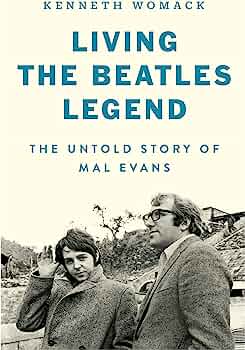 Interestingly, while everyone involved decided to keep Ringo's departure "hush-hush" for the time being, word got out. As detailed in Kenneth Womack's book "Living The Beatles Legend: The Untold Story Of Mal Evans," "A strange man, drunk and apparently a drummer, lumbered into (EMI Studios). 'I've come to play with The Beatles,' he announced, having heard that Ringo had quit the group. Mal stood up and approached the much smaller man, telling him that 'Ringo hasn't left The Beatles. He's just on holiday.' Mal began chatting up the fellow, every few moments taking a step toward the exit, with the man following his lead. 'It was a slow progression,' (Apple employee) Kevin (Harrington) recalled, but within some twenty minutes, Mal had succeeded in gingerly removing Ringo's would-be replacement from the premises, walking him straight out of the studio carpark." Interestingly, while everyone involved decided to keep Ringo's departure "hush-hush" for the time being, word got out. As detailed in Kenneth Womack's book "Living The Beatles Legend: The Untold Story Of Mal Evans," "A strange man, drunk and apparently a drummer, lumbered into (EMI Studios). 'I've come to play with The Beatles,' he announced, having heard that Ringo had quit the group. Mal stood up and approached the much smaller man, telling him that 'Ringo hasn't left The Beatles. He's just on holiday.' Mal began chatting up the fellow, every few moments taking a step toward the exit, with the man following his lead. 'It was a slow progression,' (Apple employee) Kevin (Harrington) recalled, but within some twenty minutes, Mal had succeeded in gingerly removing Ringo's would-be replacement from the premises, walking him straight out of the studio carpark."
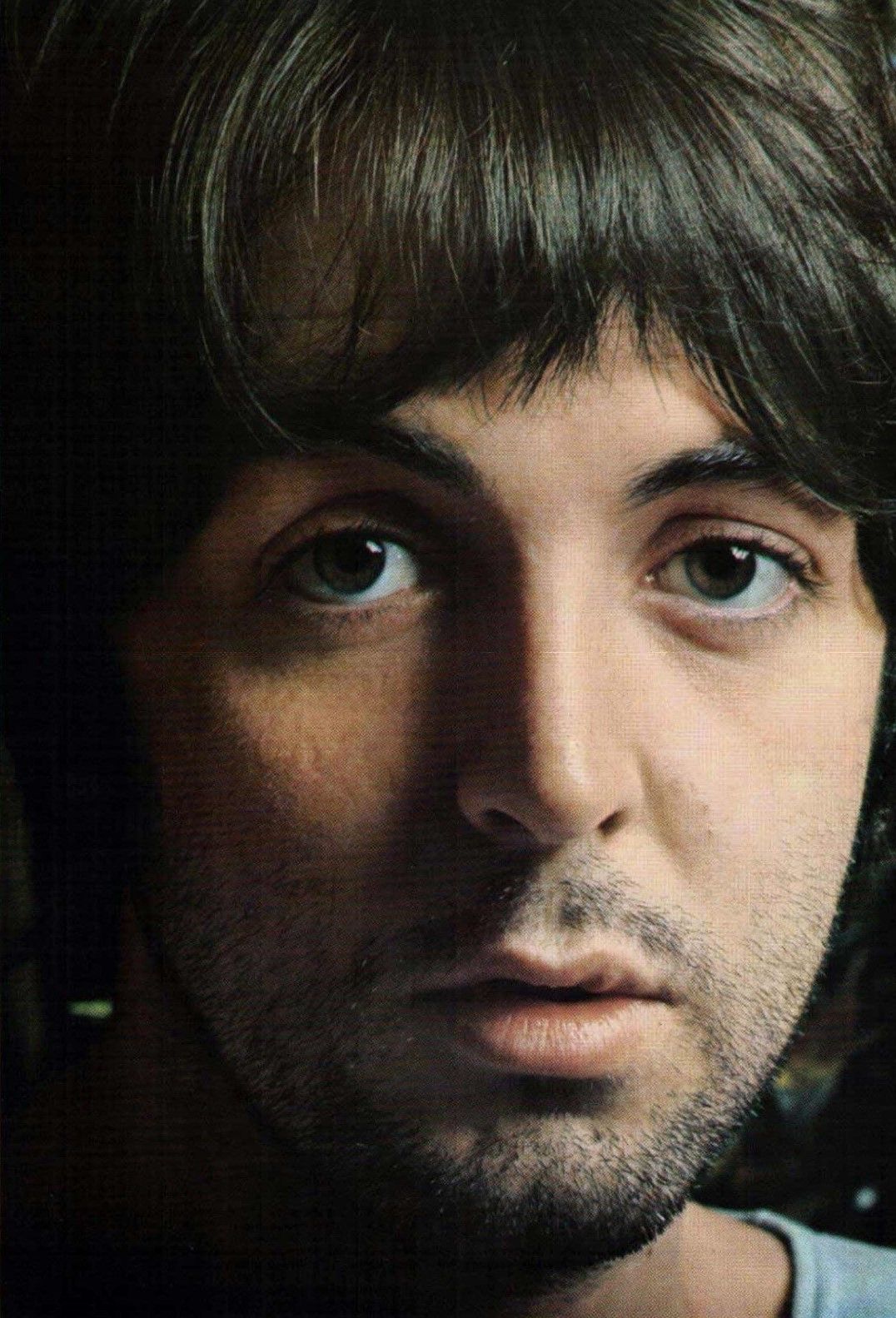 The following day (or should I say, later that same day), August 23rd, 1968, the three Beatles returned to EMI Studio Two at 7 pm (or so) to complete the song. “Ringo's absence spurred The Beatles into making one of their tightest and best recorded rock songs ever,” Mark Lewisohn relates in his book “The Beatles Recording Sessions.” Onto "take five'" of the previous day, the three of them recorded multiple overdubs onto the remaining open tracks. Engineer Ken Scott relates: “They did 'Back In The U.S.S.R.' with what I seem to recall was a composite drum track of bits and pieces, possibly with all of the other three playing drums.” This has to be the case since the two drum parts played on this day were performed simultaneous to Paul playing other instruments. The following day (or should I say, later that same day), August 23rd, 1968, the three Beatles returned to EMI Studio Two at 7 pm (or so) to complete the song. “Ringo's absence spurred The Beatles into making one of their tightest and best recorded rock songs ever,” Mark Lewisohn relates in his book “The Beatles Recording Sessions.” Onto "take five'" of the previous day, the three of them recorded multiple overdubs onto the remaining open tracks. Engineer Ken Scott relates: “They did 'Back In The U.S.S.R.' with what I seem to recall was a composite drum track of bits and pieces, possibly with all of the other three playing drums.” This has to be the case since the two drum parts played on this day were performed simultaneous to Paul playing other instruments.
 The overdubs that were performed onto "take five" can be heard on the "'White Album' Super Deluxe Edition" box set, this beginning with George practicing a snare drum / tambourine part he was about to add to the previous day's rhythm track. "I've been wonderful on the last two takes," he exclaims as he's waiting for the rhythm track to begin, this indicating that they made various attempts as performing this particular overdub. After a later take in the session, George asked 'How was that?" George Martin then replied, "George, I think you're giving me less bass drum." Also overdubed at this time was Paul on lead guitar, bass and piano, John on rhythm guitar and yet another drum part, and George on lead guitar and bass. Mark Lewisohn sums up the procedings in his book "The Beatles Recording Sessions," saying: “The song was also a composite recording in other ways, with three bass guitar parts, played by John, Paul and George respectively, and both Paul and George playing lead guitar.” The overdubs that were performed onto "take five" can be heard on the "'White Album' Super Deluxe Edition" box set, this beginning with George practicing a snare drum / tambourine part he was about to add to the previous day's rhythm track. "I've been wonderful on the last two takes," he exclaims as he's waiting for the rhythm track to begin, this indicating that they made various attempts as performing this particular overdub. After a later take in the session, George asked 'How was that?" George Martin then replied, "George, I think you're giving me less bass drum." Also overdubed at this time was Paul on lead guitar, bass and piano, John on rhythm guitar and yet another drum part, and George on lead guitar and bass. Mark Lewisohn sums up the procedings in his book "The Beatles Recording Sessions," saying: “The song was also a composite recording in other ways, with three bass guitar parts, played by John, Paul and George respectively, and both Paul and George playing lead guitar.”
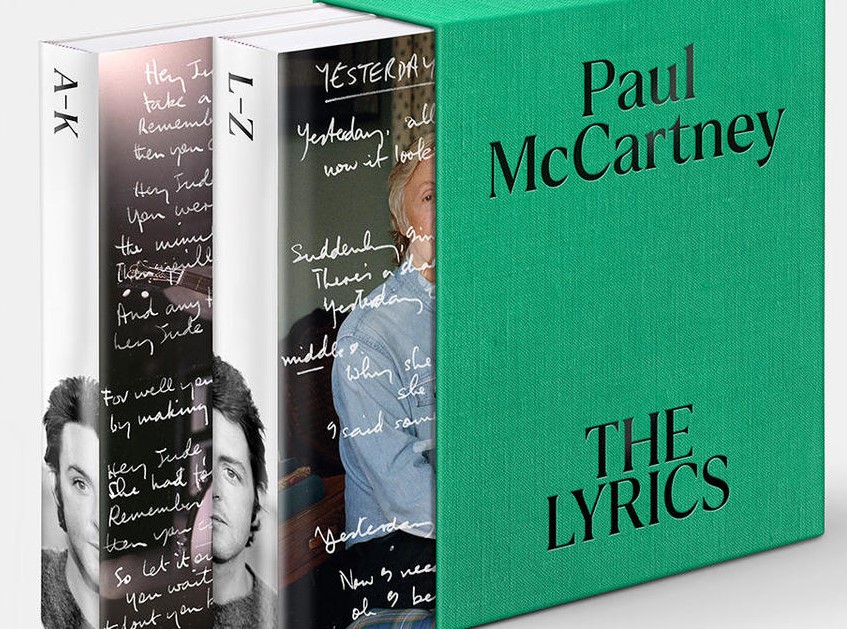 At this point, the four-track tape was full. A reduction mix needed to be made to clear up more space for the remaining overdubs, this reduction mix becoming "take six." All of the instrumental elements were recorded onto tracks one and two, leaving tracks three and four of the four-track tape open for vocals. With the tape speed raised to a faster tempo and higher pitch, Paul performed his lead vocals, double-tracked at times, while John, Paul and George performed Beach Boys-like harmonies, John singing the 'da-da-da-da' bass parts as Paul and George hit the high notes. They even threw in some handclaps during these vocal overdubs. "There's a pretty blatant parody of a Beach Boys chorus in the background," Paul admits in his book "The Lyrics." At this point, the four-track tape was full. A reduction mix needed to be made to clear up more space for the remaining overdubs, this reduction mix becoming "take six." All of the instrumental elements were recorded onto tracks one and two, leaving tracks three and four of the four-track tape open for vocals. With the tape speed raised to a faster tempo and higher pitch, Paul performed his lead vocals, double-tracked at times, while John, Paul and George performed Beach Boys-like harmonies, John singing the 'da-da-da-da' bass parts as Paul and George hit the high notes. They even threw in some handclaps during these vocal overdubs. "There's a pretty blatant parody of a Beach Boys chorus in the background," Paul admits in his book "The Lyrics."
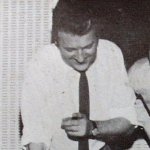 After all the overdubs were complete, the first and only mono mix was immediately made by producer George Martin and engineers Ken Scott and John Smith. During this mix, however, one final touch was added; the sound of a Viscount turboprop airliner taking off and landing, eight seconds of which appear at the beginning of the song, the sound then reappearing here and there throughout and then reprising at the conclusion. Tape loops were made of these sounds, these being held by engineer John Smith on a pencil and run on a separate tape machine and faded up and down while this mix was being created. Stuart Eltham, curator of the sound effects library at EMI, explains: “Someone managed to get that tape for me at London Airport. There's one of it revving up and taking off and one of it landing. It's a Viscount airplane filed in the library as 'Volume 17: Jet and Piston Engine Aeroplane.'” After all the overdubs were complete, the first and only mono mix was immediately made by producer George Martin and engineers Ken Scott and John Smith. During this mix, however, one final touch was added; the sound of a Viscount turboprop airliner taking off and landing, eight seconds of which appear at the beginning of the song, the sound then reappearing here and there throughout and then reprising at the conclusion. Tape loops were made of these sounds, these being held by engineer John Smith on a pencil and run on a separate tape machine and faded up and down while this mix was being created. Stuart Eltham, curator of the sound effects library at EMI, explains: “Someone managed to get that tape for me at London Airport. There's one of it revving up and taking off and one of it landing. It's a Viscount airplane filed in the library as 'Volume 17: Jet and Piston Engine Aeroplane.'”
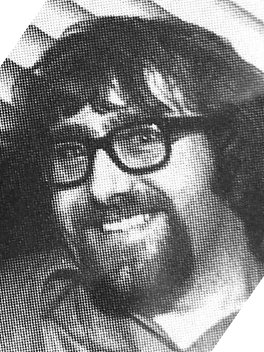 A tape copy of the completed mono mix was made at the end of the session, along with four other recently completed songs, and given to roadie Mal Evans. This highly productive session was complete by 3 am the following morning. A tape copy of the completed mono mix was made at the end of the session, along with four other recently completed songs, and given to roadie Mal Evans. This highly productive session was complete by 3 am the following morning.
Even as late as 1968, mono appears to have been the most important medium for popular music in the UK, stereo mixes being created later. The released stereo mix of “Back In The U.S.S.R.” as well as various other "White Album" tracks, was created on October 13th, 1968 in the control room of EMI Studio Two sometime in the later hours of this 7 pm to 6 am session by the same engineering team of George Martin, Ken Scott and John Smith. The first order of business on this day, however, was the recording of the final "White Album" track, John's beautiful song "Julia." Concerning "Back In The U.S.S.R," engineer John Smith recalls, as recounted in the 50th Anniversary "White Album" book: "For the mono mix, everything came out OK, but the stereo mix took a long, long time and I was holding the pencil to keep the effects tape taut. I guess I must have been leaning back on it and started to stretch it, because the mono has this clear, clean lovely jet sound while the stereo is an abomination of a jet sound." This would account for the somewhat unidentifiable screaching sound heard at the end of the more popular stereo mix of the song.
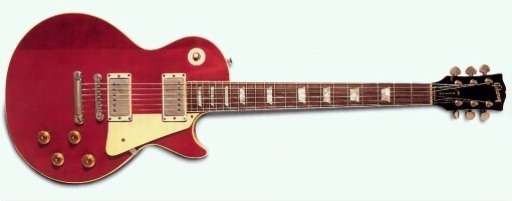 There were a few other differences between the stereo and mono mixes of the song. The piano is somewhat quieter in the stereo mix, the sharp guitar sound at the very beginning of the song, which was a cut-off guitar note from the original rhythm track, is louder in the mono mix, drum beats heard during the closing airplane sounds in the mono mix are missing in the stereo, and extra guitar chords are heard at the beginning of the guitar solo in the stereo mix, as well as additional shouts and piano during the solo. There were a few other differences between the stereo and mono mixes of the song. The piano is somewhat quieter in the stereo mix, the sharp guitar sound at the very beginning of the song, which was a cut-off guitar note from the original rhythm track, is louder in the mono mix, drum beats heard during the closing airplane sounds in the mono mix are missing in the stereo, and extra guitar chords are heard at the beginning of the guitar solo in the stereo mix, as well as additional shouts and piano during the solo.
 Another element John and Paul wanted in the new album was crossfades between some of the songs. During what became the first and only 24-hour-session The Beatles ever had, John and Paul worked to construct the complete running order of the two-disc “White Album” on October 16th/17th, 1968 in Rooms 41 and 42 of Abbey Road as well as the control rooms of EMI Studios One, Two and Three. This session lasted from 5 pm on October 16th to 5 pm on October 17th. The final airplane sound of “Back In The U.S.S.R.” was to be crossfaded with the guitar introduction of “Dear Prudence.” Both a mono and a stereo crossfade were created during this marathon session, the stereo version taking a few seconds longer to crossfade between the two songs than the mono. These were created by the same engineering team of George Martin, Ken Scott and John Smith, under the supervision of John and Paul. Another element John and Paul wanted in the new album was crossfades between some of the songs. During what became the first and only 24-hour-session The Beatles ever had, John and Paul worked to construct the complete running order of the two-disc “White Album” on October 16th/17th, 1968 in Rooms 41 and 42 of Abbey Road as well as the control rooms of EMI Studios One, Two and Three. This session lasted from 5 pm on October 16th to 5 pm on October 17th. The final airplane sound of “Back In The U.S.S.R.” was to be crossfaded with the guitar introduction of “Dear Prudence.” Both a mono and a stereo crossfade were created during this marathon session, the stereo version taking a few seconds longer to crossfade between the two songs than the mono. These were created by the same engineering team of George Martin, Ken Scott and John Smith, under the supervision of John and Paul.
On January 3rd, 1969, during their rehearsal sessions at Twickenham Film Studios for what became the "Let It Be" movie, The Beatles briefly ran through a rough version of "Back In The U.S.S.R." which was committed to tape. This version, of course, has never seen any official release.
 A newer, more vibrant stereo mix was made of “Back In The U.S.S.R.” sometime between 2004 and 2006 by George Martin and his son Giles Martin for the album “Love.” Its clarity is superior to that of the original release, the vocal track being raised up to reveal much more of the extraneous vocalizing throughout the song, most noticeable in the introduction and conclusion of the song. Additional guitar work is heard at the beginning of the song as well. The released compact disc contains a truncated version of this song which omits the solo and second bridge, while the DVD and iTunes version includes the entire version as we're used to hearing it. A newer, more vibrant stereo mix was made of “Back In The U.S.S.R.” sometime between 2004 and 2006 by George Martin and his son Giles Martin for the album “Love.” Its clarity is superior to that of the original release, the vocal track being raised up to reveal much more of the extraneous vocalizing throughout the song, most noticeable in the introduction and conclusion of the song. Additional guitar work is heard at the beginning of the song as well. The released compact disc contains a truncated version of this song which omits the solo and second bridge, while the DVD and iTunes version includes the entire version as we're used to hearing it.
Sometime in 2018, Giles Martin, with engineer Sam Okell, returned to the master tapes of the song to create an incredible new stereo mix for inclusion on the 50th Anniversary releases of the "White Album." He also thought to create a stereo mix of the overdubbed "take five," as mentioned above, as well as the 'Kinfauns' Esher demo that the group made in late May of 1968.
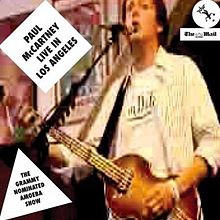 The first live released recording of “Back In The U.S.S.R.” by Paul McCartney was done on March 5th, 1990 in Tokyo, Japan, the recording being released on both “Tripping The Live Fantastic” and “Tripping The Live Fantastic: Highlights!” Sometime between April 1st and May 18th, 2002, another live recording of the song was made which was released on both “Back In The US” in the states and “Back In The World” worldwide. Paul's performance of the song on June 27th, 2007 at Amoeba Music in Hollywood, California was also recorded and released on the album “Paul McCartney Live In Los Angeles,” which was made available only in Britain and Ireland exclusively for 'The Mail On Sunday' newspaper. This same performance was eventually released in the US on the album "Amoeba Gig." Between July 17th and 21st, 2009, another live version of the song was recorded at Citi Field for release on the album "Good Evening New York City." The first live released recording of “Back In The U.S.S.R.” by Paul McCartney was done on March 5th, 1990 in Tokyo, Japan, the recording being released on both “Tripping The Live Fantastic” and “Tripping The Live Fantastic: Highlights!” Sometime between April 1st and May 18th, 2002, another live recording of the song was made which was released on both “Back In The US” in the states and “Back In The World” worldwide. Paul's performance of the song on June 27th, 2007 at Amoeba Music in Hollywood, California was also recorded and released on the album “Paul McCartney Live In Los Angeles,” which was made available only in Britain and Ireland exclusively for 'The Mail On Sunday' newspaper. This same performance was eventually released in the US on the album "Amoeba Gig." Between July 17th and 21st, 2009, another live version of the song was recorded at Citi Field for release on the album "Good Evening New York City."
Song Structure and Style
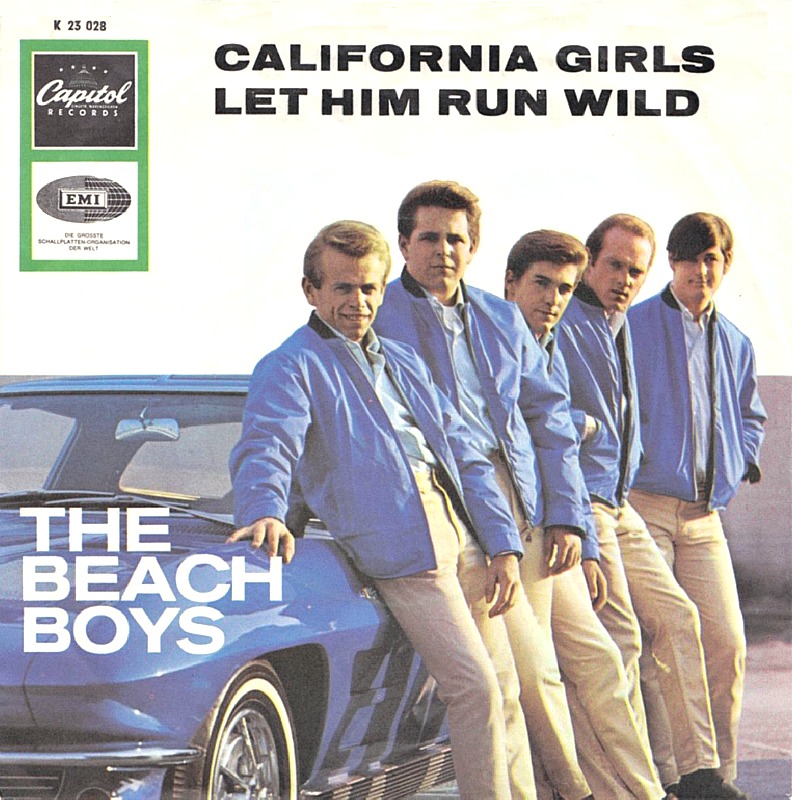 Since the song is patterned after classic rock 'n roll gems like "Back In The U.S.A." and "California Girls," the structure for "Back In The U.S.S.R." is quite standard, consisting of a 'verse/ verse/ bridge/ verse (instrumental)/ bridge/ verse' pattern (or aababa) with a predictable introduction and conclusion thrown in for good measure. That is not to say there isn't a trick or two hidden within, as we'll see. Since the song is patterned after classic rock 'n roll gems like "Back In The U.S.A." and "California Girls," the structure for "Back In The U.S.S.R." is quite standard, consisting of a 'verse/ verse/ bridge/ verse (instrumental)/ bridge/ verse' pattern (or aababa) with a predictable introduction and conclusion thrown in for good measure. That is not to say there isn't a trick or two hidden within, as we'll see.
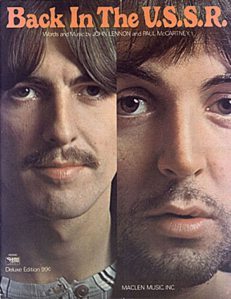 We start off with a few seconds of the sound of a plane taking off which is faded in and then continues in the mix during the actual band introduction. The first instrument heard is a rather startling lead guitar flub which appears to have been caught on an open track of the tape by accident. (This guitar flub is mixed out of the newer mix created for the “Love” album, the producers opting instead to artificially insert some highly distorted guitar noise from the previous track “Revolution.”) The proper introduction then begins, which is four measures in length and builds musically in layers not unlike the trademark “aah” harmonies in “Twist And Shout.” Multiple guitars, basses and drums thump out this standard rock 'n roll introduction which ends in an overdubbed tom tom fill from either John or George and an anticipated “ohhhhh” from Paul. The 'plane taking off' effect finally fades from view during the fourth and final measure of this introduction. We start off with a few seconds of the sound of a plane taking off which is faded in and then continues in the mix during the actual band introduction. The first instrument heard is a rather startling lead guitar flub which appears to have been caught on an open track of the tape by accident. (This guitar flub is mixed out of the newer mix created for the “Love” album, the producers opting instead to artificially insert some highly distorted guitar noise from the previous track “Revolution.”) The proper introduction then begins, which is four measures in length and builds musically in layers not unlike the trademark “aah” harmonies in “Twist And Shout.” Multiple guitars, basses and drums thump out this standard rock 'n roll introduction which ends in an overdubbed tom tom fill from either John or George and an anticipated “ohhhhh” from Paul. The 'plane taking off' effect finally fades from view during the fourth and final measure of this introduction.
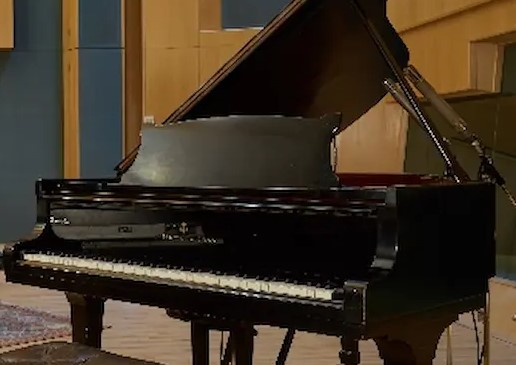 The first verse then begins, which is fourteen measures in length. Paul's piano kicks in immediately at this point, as does his single-tracked lead vocal. The 'plane landing' effect is heard throughout the verse in the background at various volumes. In the eighth measure, Paul performs a perfunctory tom tom fill while the title of the song is sung for the first time. For the remainder of the verse, Paul sings double-tracked. An interesting building lead guitar passage appears in the ninth through eleventh measures while Paul misses the snare drum once in the ninth and tenth measures, redeeming himself in the eleventh measure with a quick snare drum fill to signal a 'Beatles break' where all instruments suddenly stop in the twelfth measure. This measure is filled with Paul repeating the song's title, followed by the full instrumentation coming back in on the thirteenth and fourteenth measures, the final measure including a simple transitional lead guitar passage and a eigthth-note snare drum fill. The first verse then begins, which is fourteen measures in length. Paul's piano kicks in immediately at this point, as does his single-tracked lead vocal. The 'plane landing' effect is heard throughout the verse in the background at various volumes. In the eighth measure, Paul performs a perfunctory tom tom fill while the title of the song is sung for the first time. For the remainder of the verse, Paul sings double-tracked. An interesting building lead guitar passage appears in the ninth through eleventh measures while Paul misses the snare drum once in the ninth and tenth measures, redeeming himself in the eleventh measure with a quick snare drum fill to signal a 'Beatles break' where all instruments suddenly stop in the twelfth measure. This measure is filled with Paul repeating the song's title, followed by the full instrumentation coming back in on the thirteenth and fourteenth measures, the final measure including a simple transitional lead guitar passage and a eigthth-note snare drum fill.
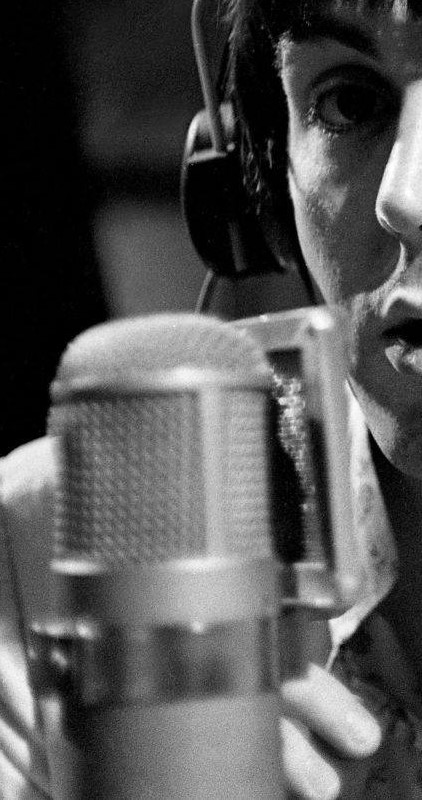 The second verse is pretty much identical to the first instrumentally except for it being sixteen measures long instead of fourteen. By the fourth measure of this verse, the 'plane landing' effect finally disappears; however it reappears in the sixth measure and is heard until the twelfth measure. A slight tom tom fill is heard at the end of the fourth measure and then a simple eighth-note snare fill is heard in the eighth measure, both of these presumably performed by Paul during the rhythm track. The twelfth and thirteenth measures are in 4/4 time as is the rest of the song, while the fourteenth measure is in 2/4, these three measures encompassing an extended version of the 'Beatles break' heard in the first verse, allowing the tricky vocal repetition “Back in the US, back in the US, back in the USSR” to be sung. Paul's double-tracked vocals are joined by John on a lower harmony (the first time his voice is heard in the song) along with syncopated staccato guitar chords in the background. The final two measures, the fifteenth and sixteenth, show the full instrumentation coming back in along with the 'plane taking off' effect. These final two measures also feature an eighth-note snare drum fill and the first emergence of low Beach Boys-like background vocals. The second verse is pretty much identical to the first instrumentally except for it being sixteen measures long instead of fourteen. By the fourth measure of this verse, the 'plane landing' effect finally disappears; however it reappears in the sixth measure and is heard until the twelfth measure. A slight tom tom fill is heard at the end of the fourth measure and then a simple eighth-note snare fill is heard in the eighth measure, both of these presumably performed by Paul during the rhythm track. The twelfth and thirteenth measures are in 4/4 time as is the rest of the song, while the fourteenth measure is in 2/4, these three measures encompassing an extended version of the 'Beatles break' heard in the first verse, allowing the tricky vocal repetition “Back in the US, back in the US, back in the USSR” to be sung. Paul's double-tracked vocals are joined by John on a lower harmony (the first time his voice is heard in the song) along with syncopated staccato guitar chords in the background. The final two measures, the fifteenth and sixteenth, show the full instrumentation coming back in along with the 'plane taking off' effect. These final two measures also feature an eighth-note snare drum fill and the first emergence of low Beach Boys-like background vocals.
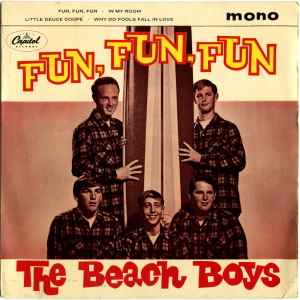 The first bridge is heard next, which is ten measures long and features Paul on double-tracked lead vocals once again. The 'plane taking off' effect is heard throughout the entire bridge, lessening in volume in the middle measures and swelling in volume at the conclusion. Two sets of background vocals are heard throughout the entire bridge as well, one lower and one higher, similar in style to The Beach Boys' hit “Fun, Fun, Fun.” A descending chord pattern is heard in the fifth and sixth measures, which adds an interesting change to the expected dynamic of the song. A slight tom tom fill is heard in the fourth measure and an eighth-note snare drum fill occupies the seventh and eighth measures accenting Paul's lyric “Georgia's always on my my my my my my my my my mind.” An eighth-note snare fill appears in the ninth measure while an eighth-note tom tom fill takes up the tenth measure along with Paul's growling “Oh, come on” which ushers in the guitar solo that comes next. The first bridge is heard next, which is ten measures long and features Paul on double-tracked lead vocals once again. The 'plane taking off' effect is heard throughout the entire bridge, lessening in volume in the middle measures and swelling in volume at the conclusion. Two sets of background vocals are heard throughout the entire bridge as well, one lower and one higher, similar in style to The Beach Boys' hit “Fun, Fun, Fun.” A descending chord pattern is heard in the fifth and sixth measures, which adds an interesting change to the expected dynamic of the song. A slight tom tom fill is heard in the fourth measure and an eighth-note snare drum fill occupies the seventh and eighth measures accenting Paul's lyric “Georgia's always on my my my my my my my my my mind.” An eighth-note snare fill appears in the ninth measure while an eighth-note tom tom fill takes up the tenth measure along with Paul's growling “Oh, come on” which ushers in the guitar solo that comes next.
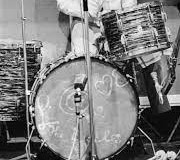 A partial instrumental verse comes next, which is fourteen measures in length as the first verse was, with a searing guitar solo playing a slight variation of the melody line taking up the first eight measures. Assorted vocalizations are heard during these measures, highlighted by Paul's “oooh” and John's “yeah” in the fifth measure. Two slightly uncomfortable drum fills are heard here in the sixth and eighth measures while the 'plane taking off' effect starts out loudly in the opening measures and fades almost out of the picture (but not totally) as this verse continues on. The final six measures are almost identical to the first verse, except for a guitar part which this time plays along with the lower Beach Boys harmonies that appear as a transition to the repeat of the bridge that follows. A partial instrumental verse comes next, which is fourteen measures in length as the first verse was, with a searing guitar solo playing a slight variation of the melody line taking up the first eight measures. Assorted vocalizations are heard during these measures, highlighted by Paul's “oooh” and John's “yeah” in the fifth measure. Two slightly uncomfortable drum fills are heard here in the sixth and eighth measures while the 'plane taking off' effect starts out loudly in the opening measures and fades almost out of the picture (but not totally) as this verse continues on. The final six measures are almost identical to the first verse, except for a guitar part which this time plays along with the lower Beach Boys harmonies that appear as a transition to the repeat of the bridge that follows.
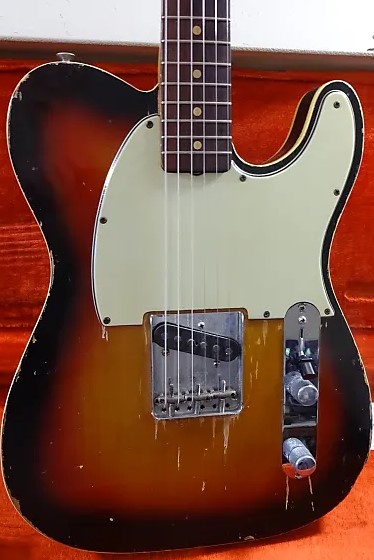 After a virtual repeat of the bridge, which this time features an excited “awwwwwww” from Paul in the final two measures, the final verse, fourteen measures in length, appears next. The elements of this verse are also nearly identical to previous verses except for an alarm-like high pitched guitar note that is heard throughout the chord changes of the first eight measures. Also prominent throughout the verse are the overdubbed handclaps from the three Beatles. Paul also gives way with a piano glissando during the 'Beatles Break' in the twelfth measure. And if you were missing it, both the 'plane taking off' and 'plane landing' effects are heard throughout this final verse as well, in that order. The last measure begins Paul's ad lib yells that finish off the song, the first being “Awww, Let me tell you, honey!” After a virtual repeat of the bridge, which this time features an excited “awwwwwww” from Paul in the final two measures, the final verse, fourteen measures in length, appears next. The elements of this verse are also nearly identical to previous verses except for an alarm-like high pitched guitar note that is heard throughout the chord changes of the first eight measures. Also prominent throughout the verse are the overdubbed handclaps from the three Beatles. Paul also gives way with a piano glissando during the 'Beatles Break' in the twelfth measure. And if you were missing it, both the 'plane taking off' and 'plane landing' effects are heard throughout this final verse as well, in that order. The last measure begins Paul's ad lib yells that finish off the song, the first being “Awww, Let me tell you, honey!”
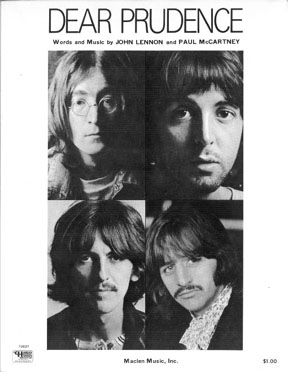 A seven-measure conclusion comes next, which features the building lead guitar passage from the verses, although they stay on the same chord this time around. The high Beach Boys harmonies are also present as are the rollicking piano chords which are accentuated at the end of the second and fourth measures. Paul's ad lib vocalizing is heard saying “Hey, I'm back...I'm back in the USSR..Hey, It's so good to be home. Hey, hey, hey, hey, back in the USSR...Aha, ha!” John's bass from the rhythm track accidentally continues past the downbeat on the seventh measure, although this is obscured very well by the 'plane landing' effect which raises in volume at the end of the song. This then crossfades nicely into John's opening guitar work on the next track of the “White Album,” namely, “Dear Prudence” or, on other compilation albums, is faded out quickly before one can detect the beginning of “Dear Prudence.” A seven-measure conclusion comes next, which features the building lead guitar passage from the verses, although they stay on the same chord this time around. The high Beach Boys harmonies are also present as are the rollicking piano chords which are accentuated at the end of the second and fourth measures. Paul's ad lib vocalizing is heard saying “Hey, I'm back...I'm back in the USSR..Hey, It's so good to be home. Hey, hey, hey, hey, back in the USSR...Aha, ha!” John's bass from the rhythm track accidentally continues past the downbeat on the seventh measure, although this is obscured very well by the 'plane landing' effect which raises in volume at the end of the song. This then crossfades nicely into John's opening guitar work on the next track of the “White Album,” namely, “Dear Prudence” or, on other compilation albums, is faded out quickly before one can detect the beginning of “Dear Prudence.”
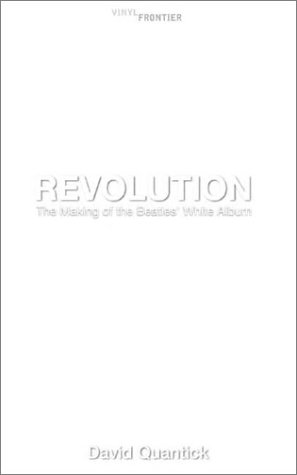 As to their performance, author David Quantick in his book “Revolution: The Making Of The Beatles' White Album” explains: “It thunders along like the jet airliner it mimics, takes corners at incredible speed, and is stuffed full of musical puns. It is one of The Beatles' greatest songs, and is widely regarded as the best rock song they ever wrote...they were always more at ease rocking out on their versions of Chuck Berry and Little Richard songs.” For an album that has been maligned by some as the disintegration of The Beatles as a band, they appeared to be in full cooperation with each other on this opening track, a “potboiler” as George Martin would always call his choice for an album's opening number. All instruments were played with the same enthusiasm and cohesiveness their earlier albums contained...except, unfortunately, Ringo wasn't there! Instead, it appears that Paul played drums on the rhythm track and both John and George took turns adding drum fills as overdubs where they felt they were needed. As to their performance, author David Quantick in his book “Revolution: The Making Of The Beatles' White Album” explains: “It thunders along like the jet airliner it mimics, takes corners at incredible speed, and is stuffed full of musical puns. It is one of The Beatles' greatest songs, and is widely regarded as the best rock song they ever wrote...they were always more at ease rocking out on their versions of Chuck Berry and Little Richard songs.” For an album that has been maligned by some as the disintegration of The Beatles as a band, they appeared to be in full cooperation with each other on this opening track, a “potboiler” as George Martin would always call his choice for an album's opening number. All instruments were played with the same enthusiasm and cohesiveness their earlier albums contained...except, unfortunately, Ringo wasn't there! Instead, it appears that Paul played drums on the rhythm track and both John and George took turns adding drum fills as overdubs where they felt they were needed.
American Releases
The first US release of "Back In The U.S.S.R." was on November 25th, 1968 on the double album "The Beatles," popularly know as the "White Album." The album spent nine weeks in the top spot of the Billboard album chart and went 19x platinum regardless of the list price of $11.79. The song was an immediate stand-out track on the album, being that it was the opening song and that it was a rocker that could easily be identified with by the public. The album in vinyl format was reissued continuously throughout the years in the US. It was released on compact disc for the first time on August 24th, 1987, then was re-released as a 30th Anniversary limited edition on November 23rd, 1998, and then as a remastered CD on September 9th, 2009. The mono vinyl album set wasn't released in the US until September 9th, 2014, while a newly mixed 50th Anniversary stereo vinyl album set was released on November 9th, 2018.
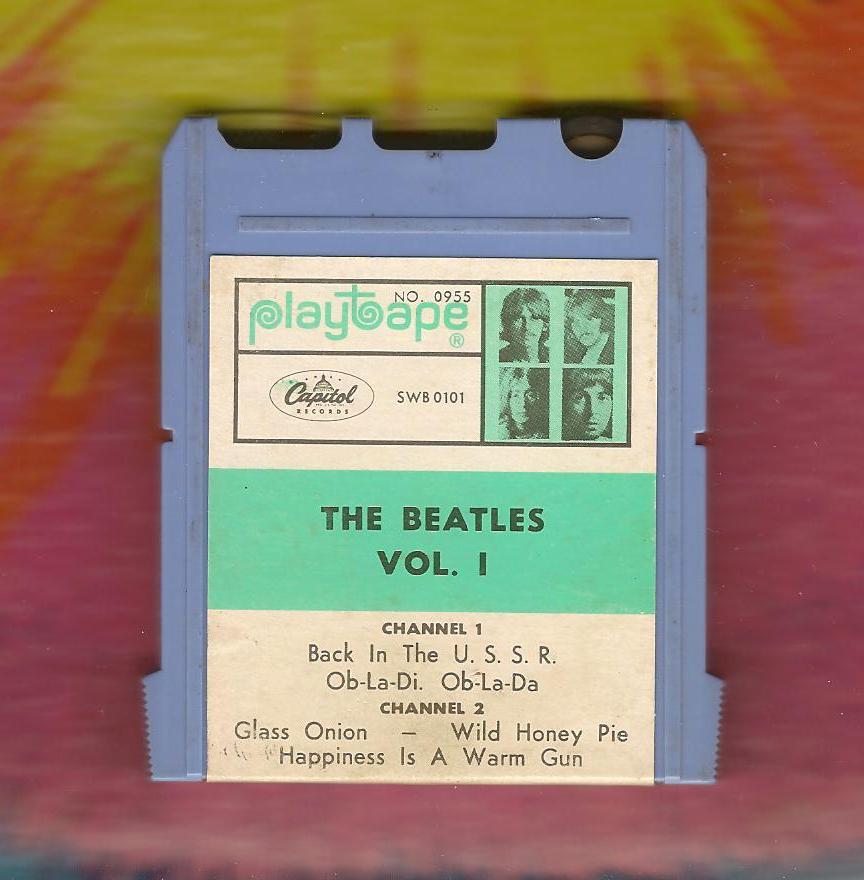 Sometime in 1969, Capitol Records released the "White Album" on a brand new but short-lived format called "Playtapes." These tape cartidges did not have the capability to include entire albums, so five volumes of "Playtapes" were released so that the majority of the tracks from this double-album would be available in this portable format. "Back In The U.S.S.R." was included on the "Playtape" entitled "The Beatles Vol. I." These "Playtapes" are highly collectable today. Sometime in 1969, Capitol Records released the "White Album" on a brand new but short-lived format called "Playtapes." These tape cartidges did not have the capability to include entire albums, so five volumes of "Playtapes" were released so that the majority of the tracks from this double-album would be available in this portable format. "Back In The U.S.S.R." was included on the "Playtape" entitled "The Beatles Vol. I." These "Playtapes" are highly collectable today.
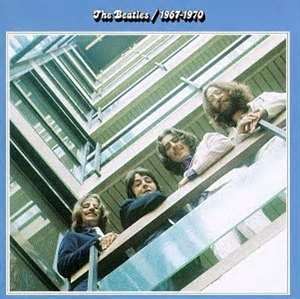 The next release was on the compilation album “The Beatles/1967-1970,” popularly known as the “Blue Album,” it being first released on April 2nd, 1973. “Back In The U.S.S.R.” was one of only three “White Album” songs that made it onto this double-album set. It got its first CD release on September 20th, 1993 and was then re-released as a remastered set on August 10th, 2010. The next release was on the compilation album “The Beatles/1967-1970,” popularly known as the “Blue Album,” it being first released on April 2nd, 1973. “Back In The U.S.S.R.” was one of only three “White Album” songs that made it onto this double-album set. It got its first CD release on September 20th, 1993 and was then re-released as a remastered set on August 10th, 2010.
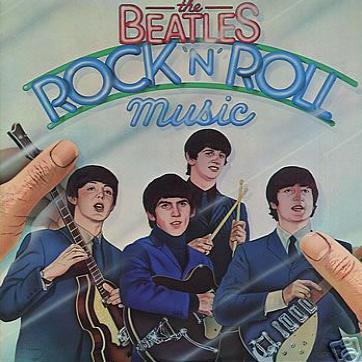 On June 7th, 1976, Capitol released another double-album compilation entitled “Rock 'n' Roll Music” which featured the song. Surprisingly, the "plane landing" fade out was done haphazardly, the beginning guitar of “Dear Prudence” being detected on the album. In order to capitalize on the success of this album in Britain, Parlophone issued “Back In The U.S.S.R.” as a single with “Twist And Shout,” another song from this album, as the b-side. Capitol in America instead chose “Got To Get You Into My Life” as the single from this album. George Martin was consulted regarding the preparation of the US version of this album and, with access only to the Capitol mixes, decided it was necessary to reverse the right and left channels of the original stereo mix for this release. On October 27th, 1980, a decision was made to divide the two discs of this compilation set into separate album releases for their budget line, “Rock 'n' Roll Music: Volume 2” including "Back In The U.S.S.R." On June 7th, 1976, Capitol released another double-album compilation entitled “Rock 'n' Roll Music” which featured the song. Surprisingly, the "plane landing" fade out was done haphazardly, the beginning guitar of “Dear Prudence” being detected on the album. In order to capitalize on the success of this album in Britain, Parlophone issued “Back In The U.S.S.R.” as a single with “Twist And Shout,” another song from this album, as the b-side. Capitol in America instead chose “Got To Get You Into My Life” as the single from this album. George Martin was consulted regarding the preparation of the US version of this album and, with access only to the Capitol mixes, decided it was necessary to reverse the right and left channels of the original stereo mix for this release. On October 27th, 1980, a decision was made to divide the two discs of this compilation set into separate album releases for their budget line, “Rock 'n' Roll Music: Volume 2” including "Back In The U.S.S.R."
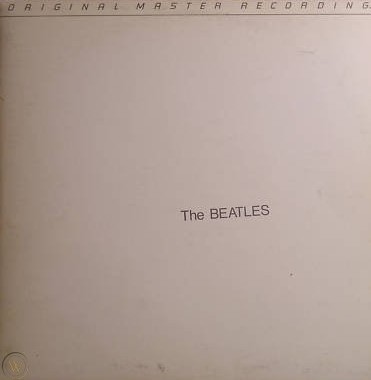 An interesting US vinyl edition of the “White Album” was released on January 7th, 1982, this being manufactured by Mobile Fidelity Sound Lab in Chatsworth, California as part of their "Original Master Recording" series. Their practice was to prepare a new master utilizing half-speed mastering technology from the original master tapes, in this case using the leased sub-master from Capitol Records. This release, which sounded superior to all previous British and American pressings, was packaged in a non-embossed unnumbered cover that did not include the usual poster/lyric sheet or individual Beatles portraits as contained in standard releases. This nonetheless excellent edition of the album was only available for a short time and is quite collectible today. An interesting US vinyl edition of the “White Album” was released on January 7th, 1982, this being manufactured by Mobile Fidelity Sound Lab in Chatsworth, California as part of their "Original Master Recording" series. Their practice was to prepare a new master utilizing half-speed mastering technology from the original master tapes, in this case using the leased sub-master from Capitol Records. This release, which sounded superior to all previous British and American pressings, was packaged in a non-embossed unnumbered cover that did not include the usual poster/lyric sheet or individual Beatles portraits as contained in standard releases. This nonetheless excellent edition of the album was only available for a short time and is quite collectible today.
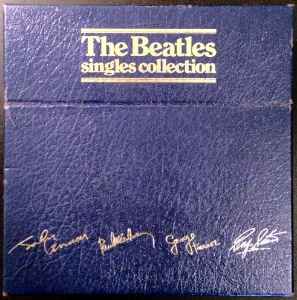 On December 6th, 1982, the vinyl box set "The Beatles Singles Collection" was released worldwide that included a single version of "Back In The U.S.S.R." with "Twist And Shout" as the b-side, which was totally new to the US market. This single was released in the UK in July of 1976, reaching #19 on the British chart, and was considered an official Beatles release when they were assembling this box set, although it was dropped when it was reissued as a CD box set in 1992 and as a new vinyl box set in 2019. On December 6th, 1982, the vinyl box set "The Beatles Singles Collection" was released worldwide that included a single version of "Back In The U.S.S.R." with "Twist And Shout" as the b-side, which was totally new to the US market. This single was released in the UK in July of 1976, reaching #19 on the British chart, and was considered an official Beatles release when they were assembling this box set, although it was dropped when it was reissued as a CD box set in 1992 and as a new vinyl box set in 2019.
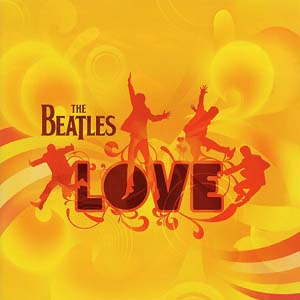 The next official release of the song was on the November 20th, 2006 released “Love” album. As mentioned above, a vibrant new mix was made of the song, but only a truncated version appeared on the general release, the entire remixed and remastered song appearing only on the DVD and iTunes version of this release. The next official release of the song was on the November 20th, 2006 released “Love” album. As mentioned above, a vibrant new mix was made of the song, but only a truncated version appeared on the general release, the entire remixed and remastered song appearing only on the DVD and iTunes version of this release.
 The entire mono Beatles catalog was first released on September 9th, 2009 in the CD box set entitled “The Beatles In Mono,” which included the first official US release of the mono “White Album,” “Back In The U.S.S.R.” obviously being included therein. The vinyl edition of this box set was first released on September 9th, 2014. The entire mono Beatles catalog was first released on September 9th, 2009 in the CD box set entitled “The Beatles In Mono,” which included the first official US release of the mono “White Album,” “Back In The U.S.S.R.” obviously being included therein. The vinyl edition of this box set was first released on September 9th, 2014.
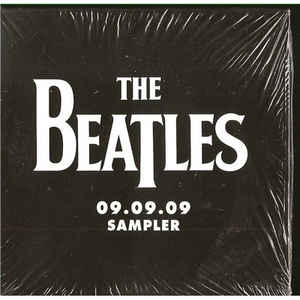 Also released on September 9th, 2009, in promotion of the remastered Beatles catalog, the "09.09.09 Sampler" was distributed to retailers and radio programmers, "Back In The U.S.S.R." being featured therein. This has become quite the find for collectors. Also released on September 9th, 2009, in promotion of the remastered Beatles catalog, the "09.09.09 Sampler" was distributed to retailers and radio programmers, "Back In The U.S.S.R." being featured therein. This has become quite the find for collectors.
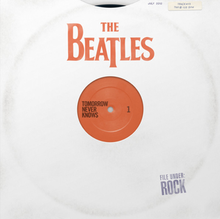 On July 24th, 2012, the iTunes Store, in partnership with EMI Records, released a Beatles compilation album entitled "Tomorrow Never Knows," the purpose of which was to highlight the group's influence on the history of rock music. The album had the approval of Paul and Ringo, as well as the board of directors for the estates of John and George, and was successful enough to peak at #24 on the Billboard album chart. "Back In The U.S.S.R." was an obvious choice for this release. On July 24th, 2012, the iTunes Store, in partnership with EMI Records, released a Beatles compilation album entitled "Tomorrow Never Knows," the purpose of which was to highlight the group's influence on the history of rock music. The album had the approval of Paul and Ringo, as well as the board of directors for the estates of John and George, and was successful enough to peak at #24 on the Billboard album chart. "Back In The U.S.S.R." was an obvious choice for this release.
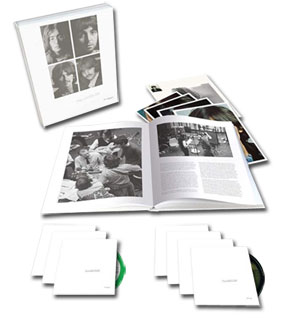 On November 9th, 2018, various editions of the "White Album" were released to commemorate its 50th Anniversary that featured interesting versions of "Back In The U.S.S.R." The "Deluxe" edition, which was made available in a 3CD set and a limited edition 180-gram 4LP vinyl set, contains the newly created Giles Martin mix of the "White Album" as well as the complete set of Esher demos that The Beatles recorded in late May of 1968. The "Super Deluxe" 6CD + 1Blu-ray edition also contains the never-before-heard instrumental "take five" from the original sessions tape from August of 1968. On November 9th, 2018, various editions of the "White Album" were released to commemorate its 50th Anniversary that featured interesting versions of "Back In The U.S.S.R." The "Deluxe" edition, which was made available in a 3CD set and a limited edition 180-gram 4LP vinyl set, contains the newly created Giles Martin mix of the "White Album" as well as the complete set of Esher demos that The Beatles recorded in late May of 1968. The "Super Deluxe" 6CD + 1Blu-ray edition also contains the never-before-heard instrumental "take five" from the original sessions tape from August of 1968.
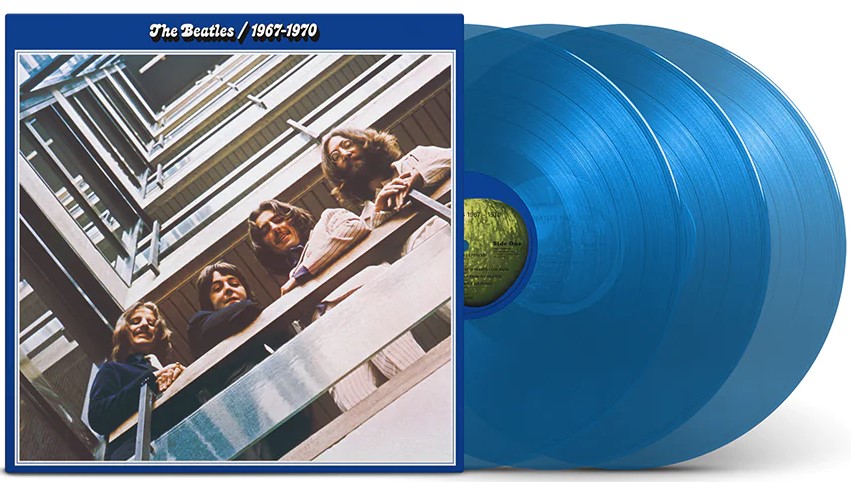 A 50th Anniversay edition of the compilation album "The Beatles / 1967 - 1970" (aka "The Blue Album") was released on November 10th, 2023, the Giles Martin stereo mix of "Back In The U.S.S.R." as detailed above, being included. This expanded release included 12 additional songs for a total of 38 tracks, and was made available as a double CD and as a triple vinyl release on both black and blue vinyl. A 50th Anniversay edition of the compilation album "The Beatles / 1967 - 1970" (aka "The Blue Album") was released on November 10th, 2023, the Giles Martin stereo mix of "Back In The U.S.S.R." as detailed above, being included. This expanded release included 12 additional songs for a total of 38 tracks, and was made available as a double CD and as a triple vinyl release on both black and blue vinyl.
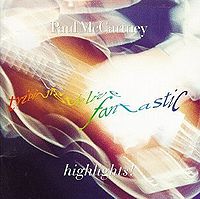 Paul released live versions of the song on various American albums. The first was "Tripping The Live Fantastic" (released November 5th, 1990), then "Tripping The Live Fantastic: Highlights!" (released November 12th, 1990), followed by "Back In The US" (released November 11th, 2002), then "Good Evening New York City" (released November 17th, 2009), and finally "Amoeba Gig" (released July 12th, 2019). Paul released live versions of the song on various American albums. The first was "Tripping The Live Fantastic" (released November 5th, 1990), then "Tripping The Live Fantastic: Highlights!" (released November 12th, 1990), followed by "Back In The US" (released November 11th, 2002), then "Good Evening New York City" (released November 17th, 2009), and finally "Amoeba Gig" (released July 12th, 2019).
Live Performances
The Beatles were way past their touring days by late 1968 and, therefore, never performed the song live as a group. However, the first live performance of "Back In The U.S.S.R." by a Beatle was on July 4th, 1984, in Washington D.C. as Ringo joined The Beach Boys on stage for a rendition of the song. Ringo may not have played on the original Beatles version, but he sure did an adequate job on this day.
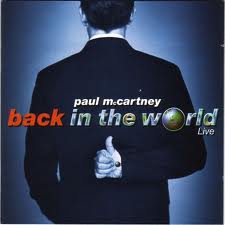 As noted above, Paul was very keen to perform the song throughout his later touring years. Every tour Paul embarked on since 1989 (except for his “Unplugged” tour of 1991) featured “Back In The U.S.S.R.” in the set list. One noteworthy performance was on May 24th, 2003, where he played the song to 100,000 people at Red Square in Moscow during his "Back In The World" tour, which was something the audience could only have dreamed about before the collapse of the Soviet Union on December 26th, 1991. Also, during a special performance on the "Late Show With David Letterman" on July 15th, 2009, Paul performed the song on top of the famous Ed Sullivan Theater marquee. Paul introduces it by saying, "This is about a place that doesn't exist no more!" As noted above, Paul was very keen to perform the song throughout his later touring years. Every tour Paul embarked on since 1989 (except for his “Unplugged” tour of 1991) featured “Back In The U.S.S.R.” in the set list. One noteworthy performance was on May 24th, 2003, where he played the song to 100,000 people at Red Square in Moscow during his "Back In The World" tour, which was something the audience could only have dreamed about before the collapse of the Soviet Union on December 26th, 1991. Also, during a special performance on the "Late Show With David Letterman" on July 15th, 2009, Paul performed the song on top of the famous Ed Sullivan Theater marquee. Paul introduces it by saying, "This is about a place that doesn't exist no more!"
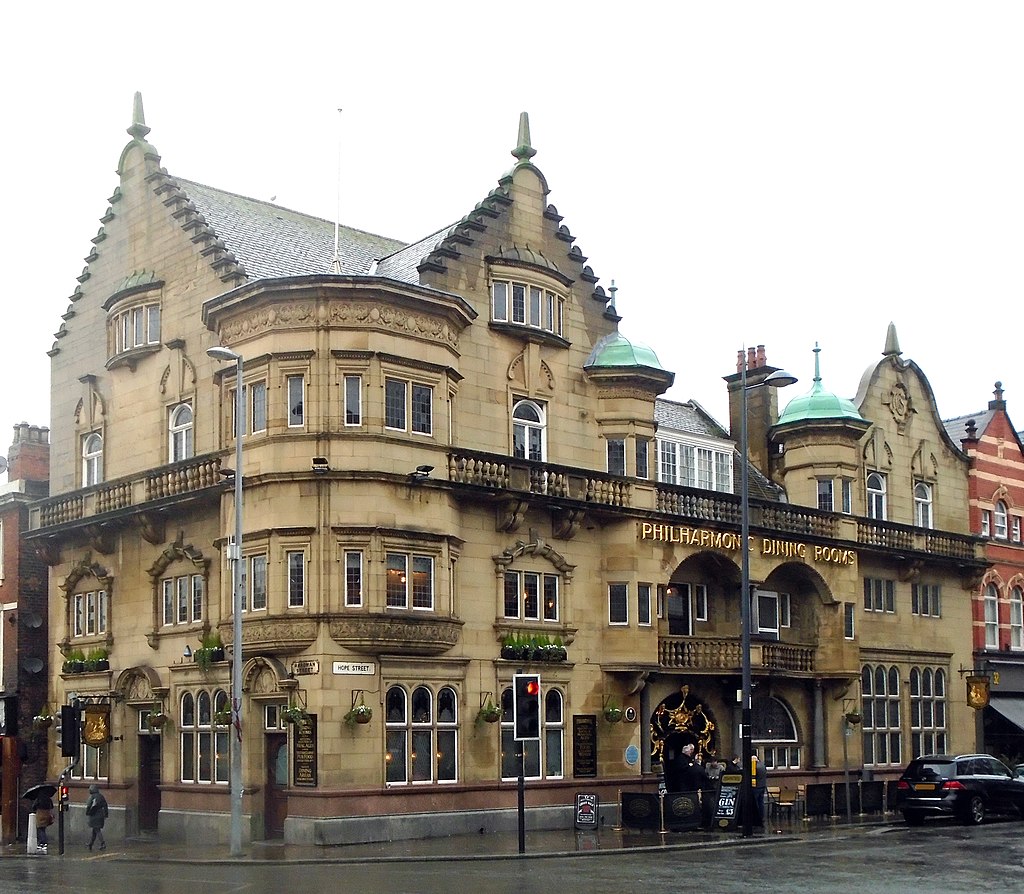 Another interesting performance of the song by Paul was at the Philharmonic Pub in Liverpool on June 9th, 2018, this being filmed for a special segment on "The Late Late Show With James Corden." A truncated version of this performance was included on a CBS prime-time special that aired on August 20th, 2018. Another interesting performance of the song by Paul was at the Philharmonic Pub in Liverpool on June 9th, 2018, this being filmed for a special segment on "The Late Late Show With James Corden." A truncated version of this performance was included on a CBS prime-time special that aired on August 20th, 2018.
Conclusion
Controversy was something that just kept falling into The Beatles' laps around this time. The list of controversies is too long to mention here but contains John's "more popular than Jesus" statment, Paul's admission of LSD use to the press, and their supposed invitation snub while in the Philippines. One can also add to this list the reaction of some to the release of "Back In The U.S.S.R."
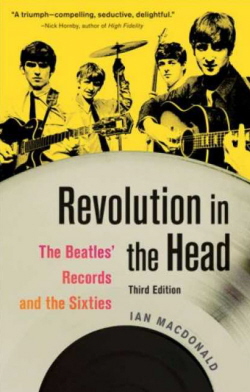 As Ian MacDonald's book “Revolution In The Head” states: “Recorded as Soviet tanks rolled into Czechoslovakia, (this song) was a rather tactless jest which, in America, prompted the John Birch Society to charge The Beatles with fomenting communism.” This innocent fun-loving rocker was viewed as “pro-Soviet” by the New Left and Far Right. As Ian MacDonald's book “Revolution In The Head” states: “Recorded as Soviet tanks rolled into Czechoslovakia, (this song) was a rather tactless jest which, in America, prompted the John Birch Society to charge The Beatles with fomenting communism.” This innocent fun-loving rocker was viewed as “pro-Soviet” by the New Left and Far Right.
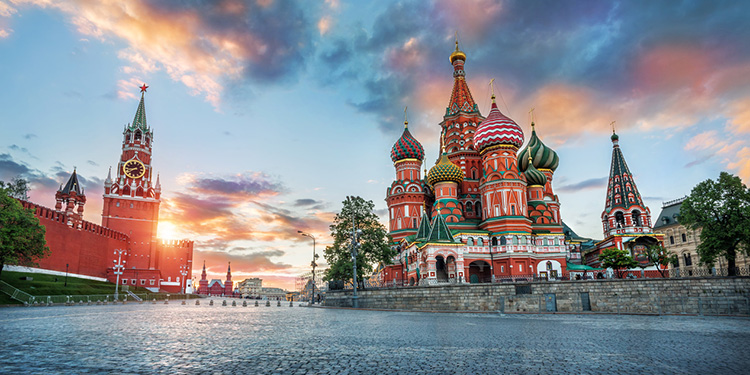 In Russia, where the song became a favorite for Russian Beatles fans who heard it through tapes smuggled into the country, it has been reported that The Beatles were viewed there as the “belch of western culture.” Paul was refused permission to perform live there in the '80s although, as mentioned above, he finally did get to perform in Moscow's Red Square on May 24th, 2003 and actually played “Back In The U.S.S.R.” for the screaming fans there. “It was a mystical land then,” McCartney stated before the show referring to his writing of the song back in 1968, adding “It's nice to see the reality. I always suspected that the people have big hearts. Now I know that's true!” And after the show, he proclaimed: “We finally got to do that one here!” In Russia, where the song became a favorite for Russian Beatles fans who heard it through tapes smuggled into the country, it has been reported that The Beatles were viewed there as the “belch of western culture.” Paul was refused permission to perform live there in the '80s although, as mentioned above, he finally did get to perform in Moscow's Red Square on May 24th, 2003 and actually played “Back In The U.S.S.R.” for the screaming fans there. “It was a mystical land then,” McCartney stated before the show referring to his writing of the song back in 1968, adding “It's nice to see the reality. I always suspected that the people have big hearts. Now I know that's true!” And after the show, he proclaimed: “We finally got to do that one here!”
Song Summary
“Back In The U.S.S.R.”
Written by: John Lennon / Paul McCartney
- Song Written: March, 1968
- Song Recorded: August 22 and 23, 1968
- First US Release Date: November 25, 1968
- First US Album Release: Apple #SWBO-101 “The Beatles”
- US Single Release: n/a
- Highest Chart Position: n/a
- British Album Release: Apple #PCS 7067-7068 “The Beatles”
- Length: 2:43
- Key: A major
- Producer: George Martin
- Engineers: Ken Scott, John Smith
Instrumentation (most likely):
- Paul McCartney - Lead and Backing Vocals, Drums (1964 Ludwig Super Classic Black Oyster Pearl), Lead Guitar (1964 Fender Esquire), Bass (1964 Rickenbacker 4001 S), Piano (Hamburg Steinway Baby Grand), handclaps
- John Lennon - Bass (1961 Fender VI), Rhythm Guitar (1965 Epiphone ES-230TD Casino), Drums (1964 Ludwig Super Classic Black Oyster Pearl), backing vocals, handclaps
- George Harrison - Lead Guitar (1957 Gibson Les Paul), Bass (1966 Fender Jazz Bass - Right Handed), Drums (1964 Ludwig Super Classic Black Oyster Pearl), tambourine, backing vocals, handclaps
Written and compiled by Dave Rybaczewski
|
IF YOU WOULD LIKE TO MAKE A DONATION TO KEEP THIS WEBSITE UP AND RUNNING, PLEASE CLICK BELOW!
Sign Up Below for our MONTHLY BEATLES TRIVIA QUIZ!
|